Do you know how fast you can go on a paddle board? Most recreational paddleboarders typically go at speeds of around 3-4 knots, which is roughly 4 miles per hour. But remember, your paddle board speed can vary depending on several factors.
Mastering speed on a paddle board is about more than just physical strength. It requires finesse and technique, transforming your strokes into efficient propulsion. This guide delves into 8 essential SUP techniques on how to go fast on a paddle board. Whether you’re cruising effortlessly across calm waters or aiming for a competitive edge, these strategies will help you navigate with greater speed and control, optimizing your paddling experience. So, grab your paddle, hop on board, and prepare to elevate your glide!
8 Tips on How to Go Fast on a Paddle Board
Craving speed on your paddle board? Master efficiency with these 8 expert-backed tips on how to go fast on a paddle board, with every stroke.
1. Extend Your Reach
Forget quick, choppy jabs. Imagine your paddle as an extension of your arm, tracing a long, smooth arc through the water. Initiate the stroke by reaching forward with your top hand, almost touching the board’s tip. This extends your stroke length, propelling you further with each pull.
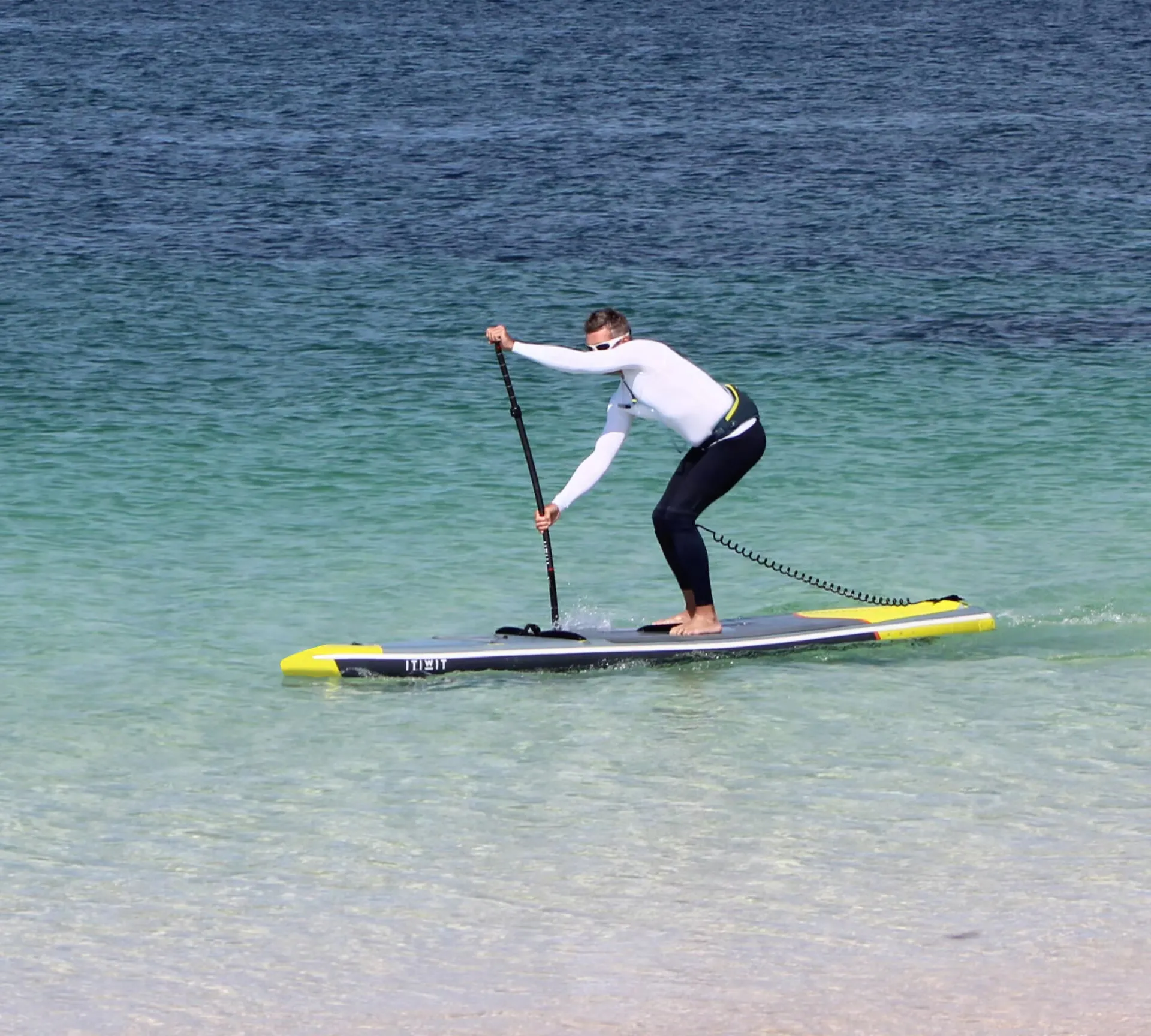
Remember, efficiency, not brute force, is vital. Focus on maximizing the blade’s distance through the water, not how hard you muscle it. This fluid motion will conserve energy while propelling you farther, making your paddling experience smoother and more efficient.
2. Engage Your Core
While arms get the initial nod, the secret to a powerful paddle lies deeper. Your core, not just your biceps, is the actual engine. Engage your abdominal muscles with each stroke, initiating the pull from your torso. This creates a stable, synergistic movement, transferring energy efficiently from your core to the paddle blade.
Imagine leveraging your entire body weight, not just isolated arm strength, to propel yourself forward. This core-centric approach generates more power with less effort, making paddling smoother and more sustainable while maximizing your efficiency on the water.
3. Swift Blade Recovery
Don’t linger! Once you’ve completed your pull and the blade exits the water, quickly bring it back for the next stroke. Any unnecessary delay in the recovery phase translates into lost momentum. Aim for a smooth, continuous rhythm, minimizing the “dead time” between strokes.
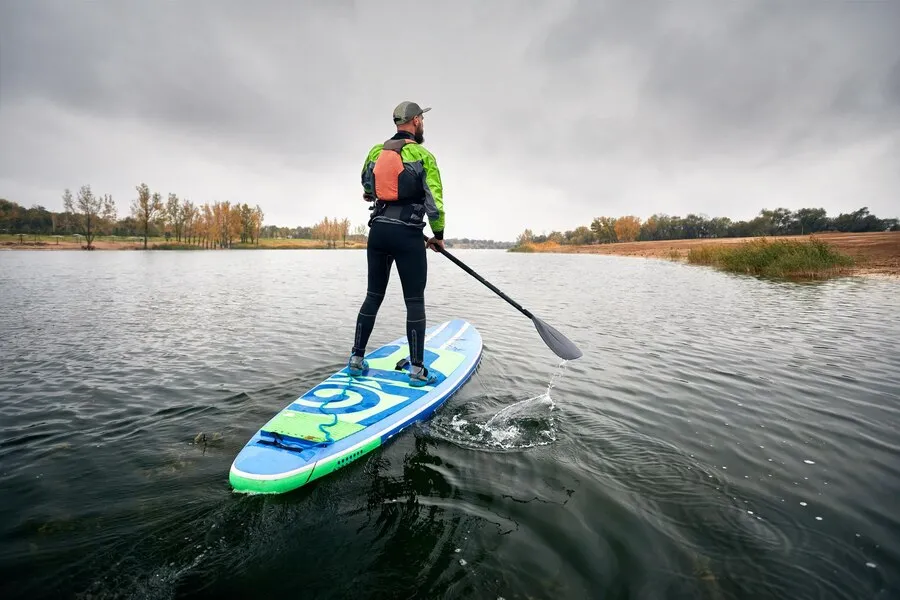
Efficiency is the key, and a swift blade recovery ensures you’re spending less time repositioning and more time propelling yourself forward.
4. Find Your Sweet Spot
Making sure you paddle efficiently is crucial for getting the most out of your paddle board. When you’re moving forward in the water, it’s important not to pull the paddle too far back past your feet. Instead, aim to put the blade deep into the water and pull it back until it lines up with your feet. This way, you transfer the most power into your movement. If you extend the stroke too far behind your feet, it reduces your leverage and slows you down.
5. Finish Strong
When you’re taking the blade out of the water, try not to lift it straight up. Instead, rotate your wrist slightly so the blade is parallel to the board before you start the next stroke. This small adjustment reduces unnecessary movement and air resistance, making it easier to transition to the next powerful stroke with less effort. Think of it as a smooth, continuous flow of paddle strokes rather than separate, disconnected movements. This subtle shift can make a big difference in your performance.
6. Less is More
While the instinct might be to swing your arms wide and paddle enthusiastically, remember that controlled, efficient movements are key to achieving speed. Focus on keeping your strokes compact and close to the board. Imagine drawing a large “C” with your paddle blade underwater, maximizing the power generated with each pull.
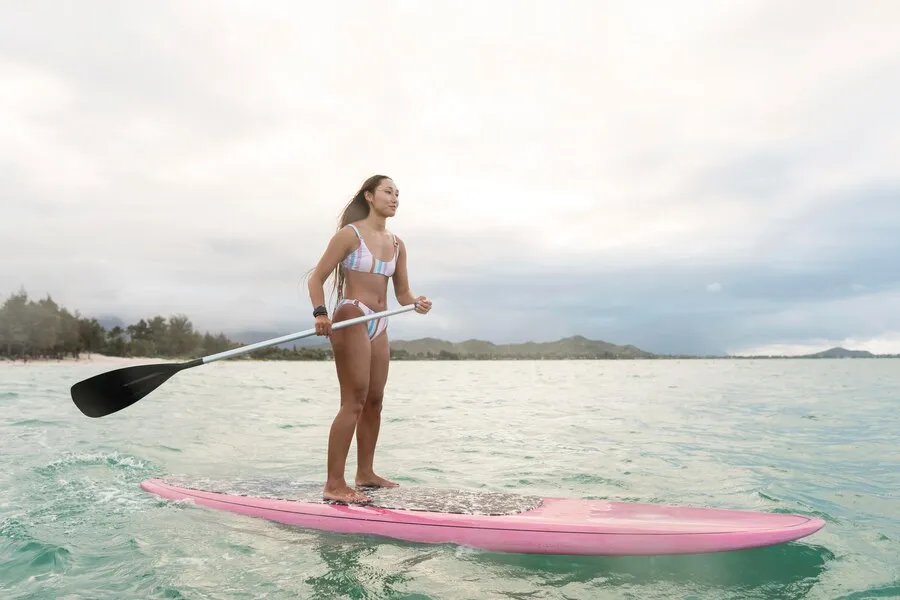
Also, avoid excessive arm movements or dipping the blade too deeply into the water, which creates unnecessary drag and slows you down. By focusing on controlled, deliberate strokes, you’ll be surprised at how much faster you can propel yourself forward with less effort.
7. Toe Power
Stand-up paddle boarding is not just an arm workout; it’s a full-body experience. Engage your core muscles to harness your power and propel yourself forward efficiently. Imagine standing tall on your toes, engaging your calves and core to create a stable, robust base. This slight shift in stance transfers power from your core to your paddle stroke, generating more thrust with each pull.
8. Straight and Steady
While the urge to explore hidden coves and meander through scenic waterways is vital, a straight line now is the most efficient path to speed. By paddling straight, you minimize resistance and maximize the distance covered with each stroke.
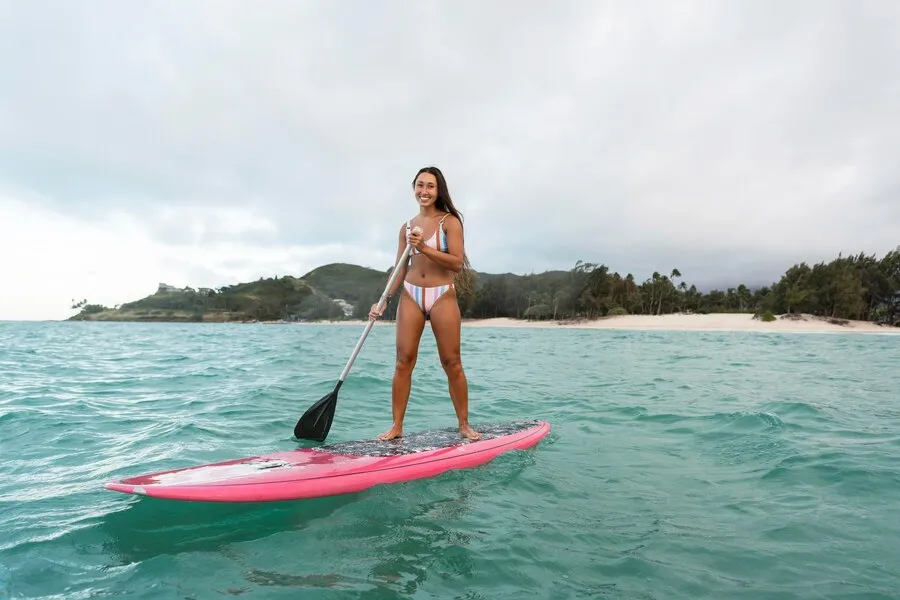
Of course, there’s always room for playful detours and spontaneous explorations, but prioritize a straight and steady course when aiming for pure speed. Imagine drawing a straight line across the water’s surface, and let that visualization guide your paddle strokes.
7 Factors Affect Your Paddle boarding speeds
Besides acknowledging “how to go fast on a paddle board”, let’s explore these factors and discover how to optimize your glide.
1. Inflatable or solid SUP
Solid SUPs, with their rigid construction, generally stand out in this arena. Their streamlined shapes and stiffer hulls experience less drag and flex, translating to faster glides and more efficient paddling. This makes them ideal for racing, touring, and experienced paddlers seeking optimal speed.
However, inflatable SUPs have come a long way. Advanced designs and drop-stitch technology offer increased rigidity, and some inflatable touring boards can rival their solid counterparts in calm conditions. Their wider profiles and thicker hulls often create more drag, limiting their top speeds.
2. Paddle Board Shape and Design
For the avid paddler, speed can be an exhilarating aspect of the sport. But did you know your board’s design significantly influences how fast you glide across the water? Understanding these key features empowers you to choose the perfect board for your need for speed.
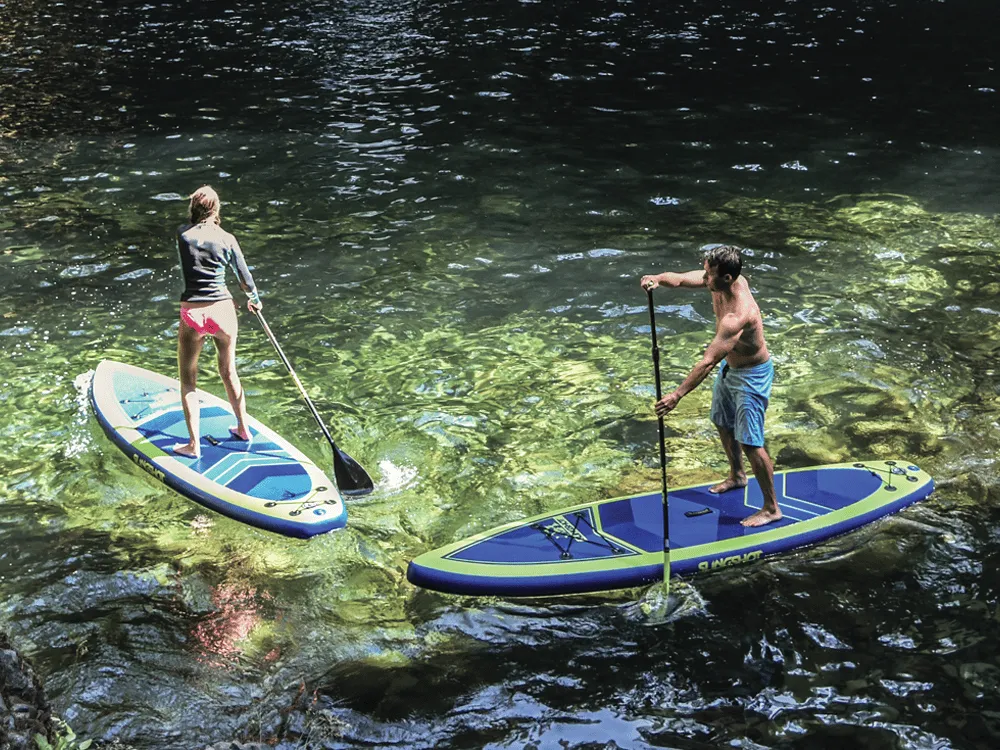
One crucial factor is the hull shape. With their pointed noses and tapered designs, displacement hulls slice through the water with minimal resistance, translating your paddling effort into efficient forward motion. In contrast, planing hulls, often found on wider boards, skim across the water’s surface, offering stability but sacrificing some speed.
Board width also plays a role. Narrower boards, with less surface area in contact with the water, experience less drag, making them ideal for cruising at higher speeds. However, wider boards offer increased stability, particularly for beginners or choppy conditions.
Length, too, has an impact. With their increased waterline, longer boards glide effortlessly, maintaining momentum with each stroke. This makes them perfect for long-distance paddling or racing. Shorter boards, while less efficient over extended distances, excel in maneuverability, ideal for navigating surf or exploring tight spaces.
Finally, consider the fins. Single center fins provide excellent tracking, ensuring you move in a straight line and maximizing speed. Removable fins offer versatility, allowing you to swap out different configurations for various water conditions.
3. Physical Fitness
A strong core forms the foundation for efficient paddling. It provides stability, allowing you to transfer power from your legs and torso to the paddle stroke, maximizing its effectiveness. Conversely, a weak core leads to wobbly balance and wasted energy.
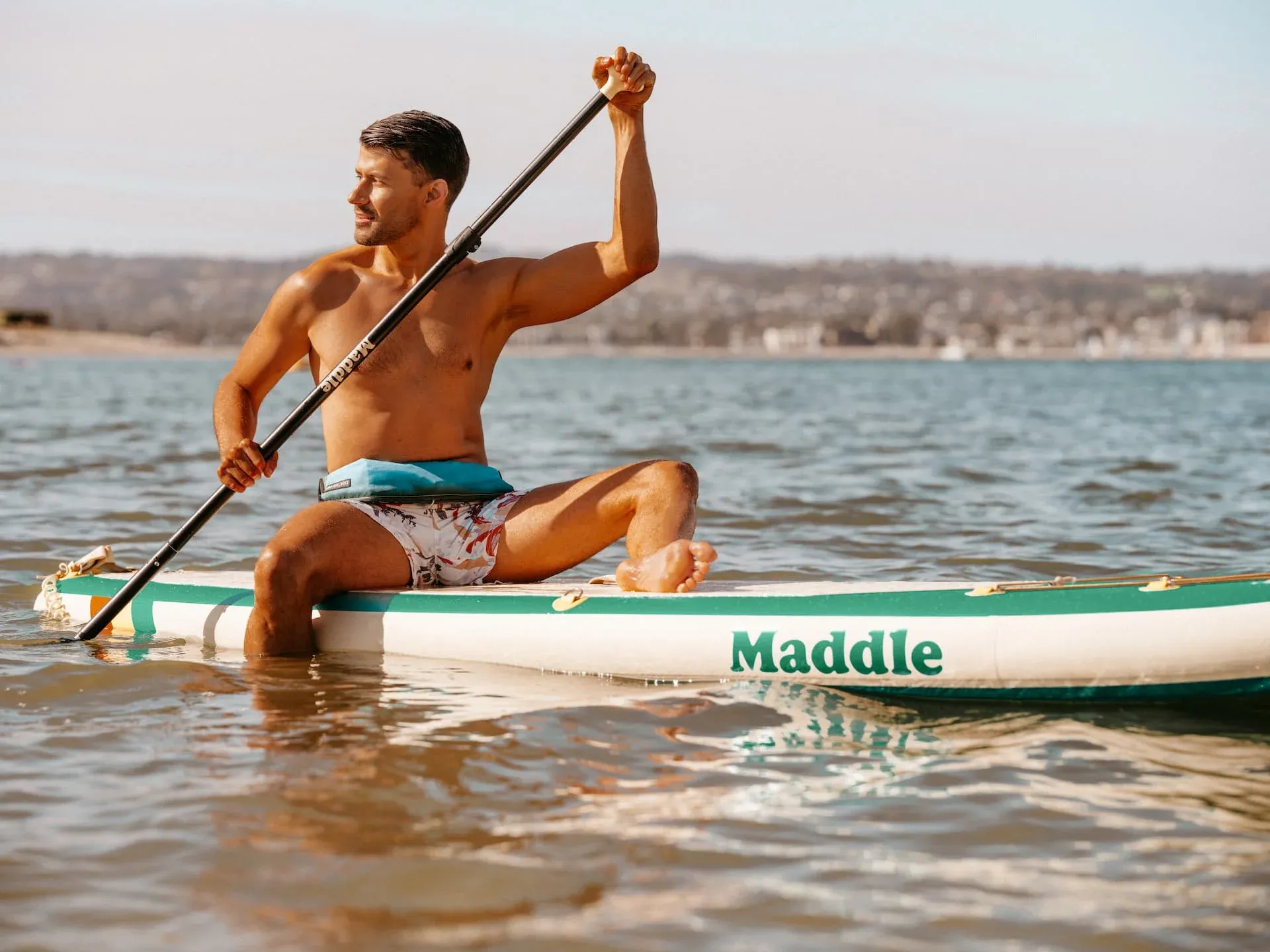
Cardiovascular fitness is equally crucial. Paddling demands sustained effort, and a well-conditioned heart and lungs ensure you can maintain a strong pace for longer distances. Imagine sprinting across a calm lake – good cardiovascular health makes it effortless, while poor fitness leaves you breathless and struggling.
Beyond core and cardio, strength in your arms, back, and shoulders contributes to powerful strokes. Overdeveloped arms without core strength can lead to fatigue and injury.
4. Board and Paddle Care
Despite often going unnoticed in the guides on how to go fast on a paddle board, optimal board and paddle care are crucial in maximizing your speed and efficiency. Think of it like fine-tuning a race car; even minor imperfections can hinder your performance.
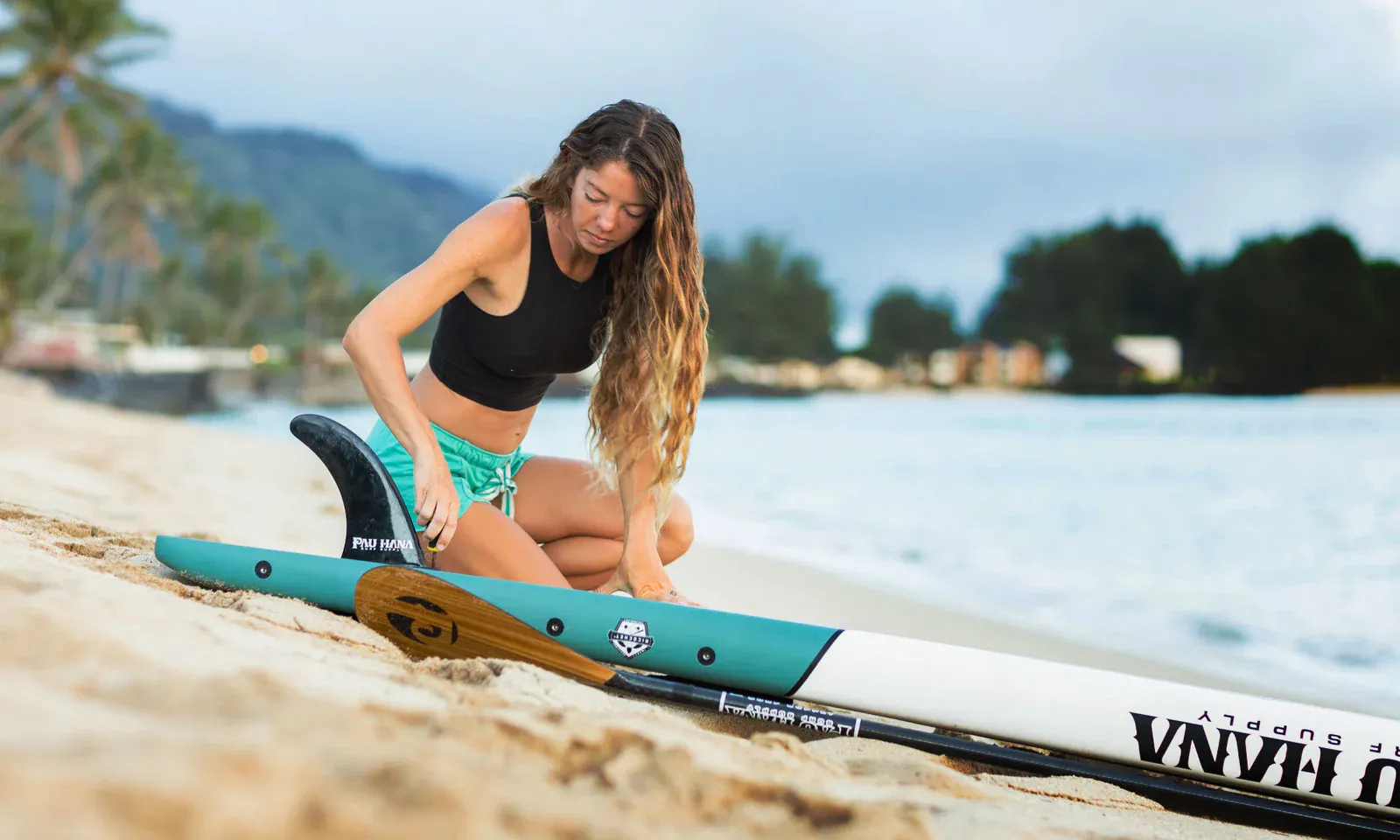
Starting with the board, even tiny dings and scratches create drag, slowing you down. Regularly inspect your board for damage and promptly repair any nicks or cracks. The tip is, a smooth hull translates to smooth sailing.
Paddle care is equally important. Grime build-up on the blade increases resistance, while warped or damaged paddles compromise power transfer. Regular cleaning and proper storage ensure optimal performance, especially for carbon fiber paddles.
5. Weather and Water Conditions
When searching for “how to paddle board faster”, you can see that wind and water conditions play a significant role in determining your paddle board speed. Calm winds and flat water offer ideal scenarios, allowing for efficient strokes and maximum glide. Specifically, the ideal wind for paddle boarding is a light breeze, typically under 10 knots, coming from behind or from the side. This type of wind can actually assist your movement, making it easier to maintain momentum without excessively battling against the conditions.
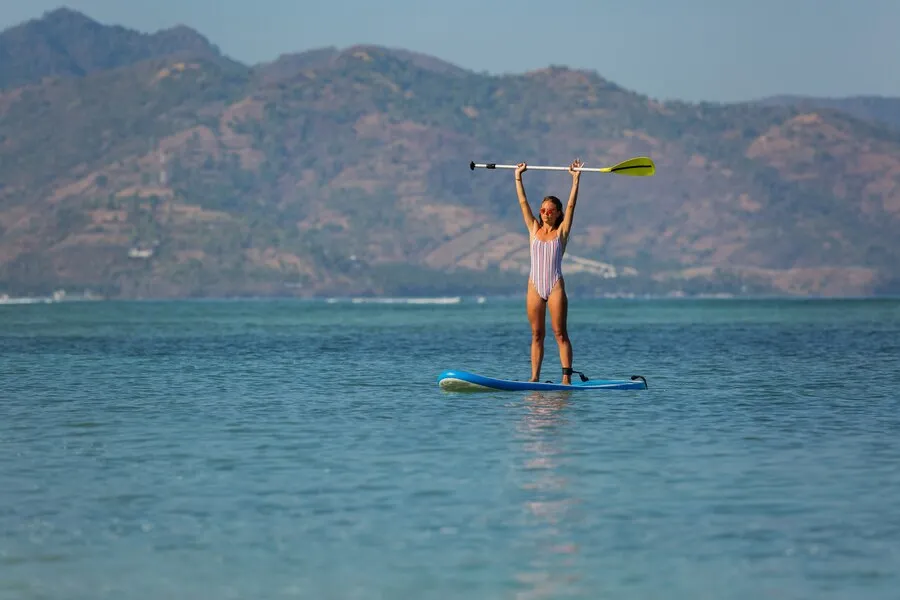
However, the equation gets more complex with increasing wind speeds. Light tailwinds can assist you, while strong headwinds create resistance, demanding greater effort for minimal progress. Conversely, crosswinds can push you off course, requiring constant adjustments.
Water conditions also influence speed. Choppy water caused by wind or waves disrupts the board’s flow, increasing drag and reducing momentum. In contrast, calm, flat water allows for a smooth glide, maximizing speed with each stroke.
Additionally, consider tides and currents. Paddling against a strong current will be strenuous, while a favorable current can boost your speed effortlessly.
Therefore, understanding and respecting weather and water conditions are essential for optimizing your paddle board experience and ensuring safety and enjoyment.
6. Efficient Use of Energy
On a paddle board, every stroke counts. While brute force might propel you forward initially, actual speed comes from efficient energy use. Imagine paddling with tense muscles, flailing strokes, and a scattered stance. This chaotic approach rapidly depletes your energy, leaving you winded and slow.
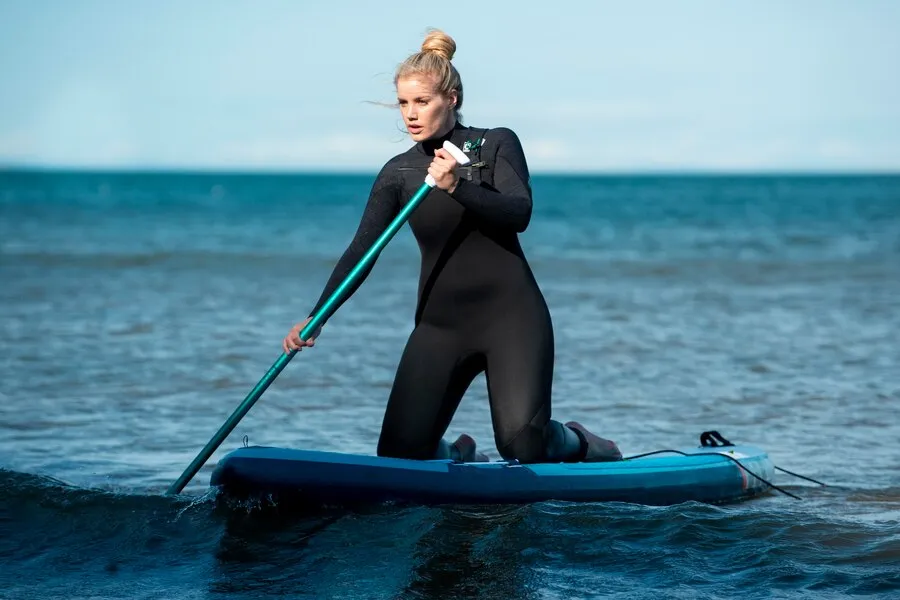
Otherwise, a smooth, controlled paddling motion powered by your core engages larger muscle groups, minimizing wasted effort. This translates to longer, more powerful strokes that propel you further with each dip.
Furthermore, efficient paddlers manage their energy wisely. They avoid frantic bursts, instead opting for a sustainable pace, adjusting for wind and currents. This measured approach conserves energy for when it’s truly needed, allowing them to push the pace in sprints or navigate challenging conditions.
7. Adjusting Board Load
While lighter boards inherently glide faster, a minimalist approach is only sometimes ideal. Striking a balance between essential gear and weight management is crucial in optimizing speed without compromising safety or enjoyment.
Every pound added to the board displaces water, increasing drag and requiring more effort to propel. Conversely, a properly loaded board, with weight distributed evenly, can maintain stability and efficient tracking. This stability allows for powerful strokes and minimizes wasted energy from wobbling.
How to Paddle Board Faster?
So, how to go fast on a paddle board? Let us introduce Boost Fin, a lightweight (2.7 lb) electric fin attachment, which can significantly enhance your paddle board speed and experience. Its powerful 800W motor delivers up to 20 lbs of thrust, propelling you to speeds of 5 mph with minimal effort.
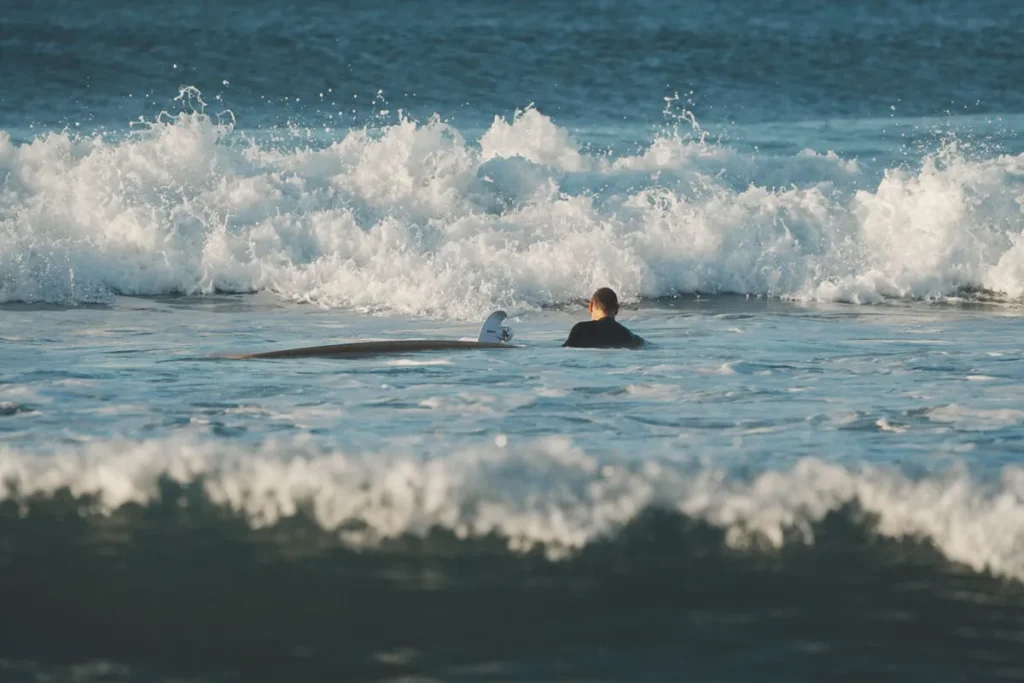
Whether you’re a seasoned paddler or just starting, Boost Fin can help you:
- Cover greater distances: Effortlessly cruise across the water, exploring further and reaching more remote spots.
- Effortless paddling: Reduce fatigue and exertion, especially against currents or wind. Enjoy a more relaxed and enjoyable ride.
- Conquer waves: Catch 3x more waves easily and ride them longer with a quick power boost.
- All-condition performance: The shock-resistant design handles harsh conditions, while the battery lasts up to 1.5 hours on a single charge.
Boost Fin suits all skill levels, offering a fun and efficient way to elevate paddle boarding. Experience the freedom and joy of gliding effortlessly across the water. With Boost Fin, “how to go fast on a paddle board” will never be your concern again.
While Boost Fin products offer exciting benefits, be cautious of purchases outside official channels. Boost Surfing exclusively sells through its website and authorized distributors to ensure product quality and warranty validity. Listings on platforms like eBay may represent unauthorized resales, potentially impacting performance and support. For guaranteed authenticity and peace of mind, purchase directly from Boost Surfing or their trusted partners. Have fun with SUP!


Share:
Turning Paddleboarding into a Spectacle: Lee’s Journey with Boost Fin
San Clemente Surf Guide: 10 Best Surf Spots